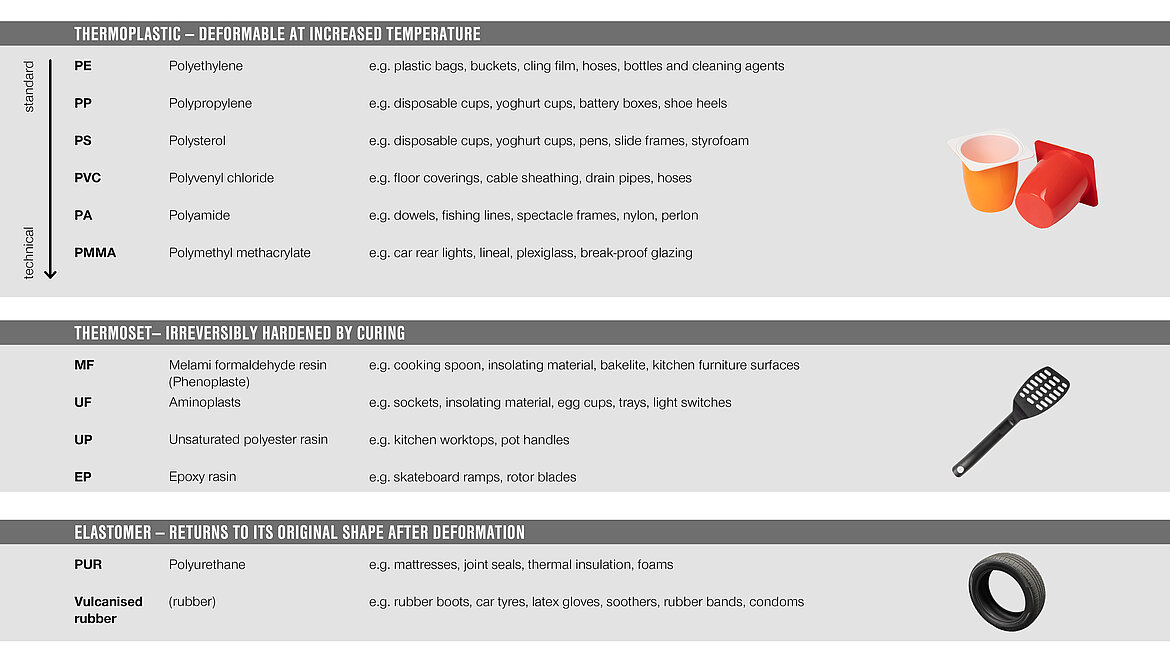Plastics have different physical properties depending on the choice and composition of raw materials, the manufacturing process and the addition of additives. In thermal and mechanical speak, we distinguish between thermosets, thermoplastics and elastomers.
Thermosets
Thermosets are plastics that, once hardened, cannot be deformed by heat or pressure. Examples of items made of thermosetting plastic are cooking spoons and sockets. Thermosets must also prove stability at strongly fluctuating temperatures. They cannot be melted without decomposition.
Thermoplastics
Thermoplastics can be deformed and reshaped over and over again, even after hardening, in a certain temperature range. Anyone who has already filled a PET bottle or yogurt cup with hot water will notice how easy it is. The bottle can be reformed by heating and this process can be repeated as often as desired. Decomposition of the material only occurs if the temperature is too high.
Elastomers
Elastomers can be deformed by heat, tension or pressure, but always return to their original form after pressure. As the name suggests, they are elastic but dimensionally stable. They are used, for example, in tyre production or in the manufacture of sealing tapes.
For fibre composite FRP, thermosets such as unsaturated polyester resin, epoxy resin and vinyl ester resin are usually used as matrices.






